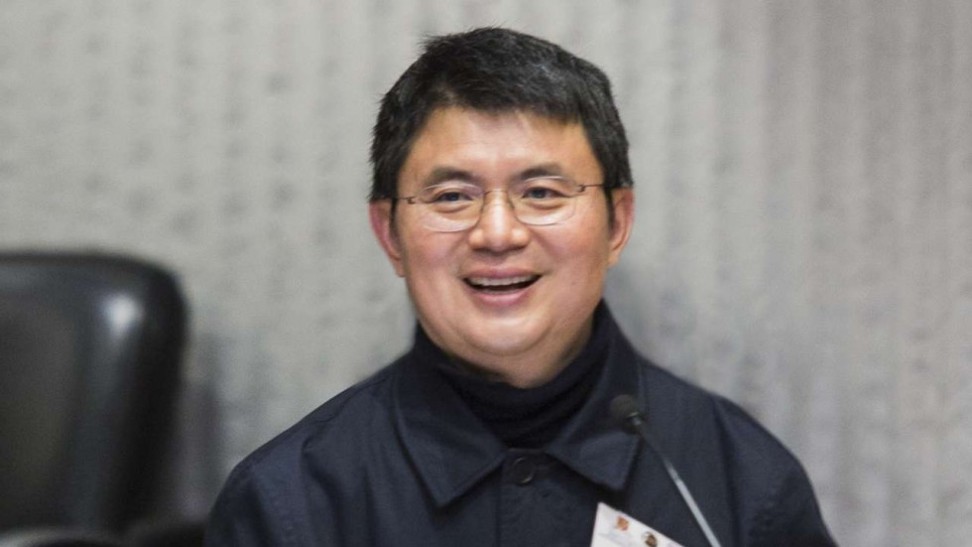
China’s regulators take the scalpel to further downsize the financial empires of oligarchs Xiao Jianhua and Ye Jianming
- Two investment firms owned by the Heilongjiang provincial government increased their stakes in the midsize commercial bank to 48.18 per cent in total from 19.69 per cent
- It came after Chinese authorities extended lifelines to at least three lenders, including the central bank’s takeover of Baoshang Bank in May
China’s financial regulators have tightened their grip on a bank and a brokerage with links to two of the country’s biggest oligarchs, breaking up their sprawling conglomerates in an ongoing crackdown of malfeasance and excessive leverage.
Two investment funds of the Heilongjiang provincial government raised their combined stake in Harbin Bank – a city-level lender based in north-eastern China and listed on the Hong Kong stock market – to 48.18 per cent, from 19.69 per cent, according to a stock exchange filing on Friday. Six private investors, three of whom are linked to financier Xiao Jianhua, transferred 15 billion yuan (US$2.1 billion) of their shares to the two investment funds, according to Chinese media.
The moves amount to an intervention by China’s regulators to clean up financial malfeasance, such as when a bank’s controlling shareholder us accused of corruption, or when there is an organic deterioration of its balance sheet, said Thomas Gatley, a senior analyst at Gavekal Research.
There “will definitely be more” proactive state intervention by China’s regulators including the central bank into small lenders, which could involve Beijing taking more action as provincial governments face increasingly difficult liquidity conditions, Gatley said. “I wouldn’t be surprised if the [People’s Bank of China] steps in directly again.”
China’s government has been cracking down since 2017 to limit an estimated US$40 trillion of debt, more than 300 per cent of the nation’s gross domestic product. Authorities are trying to fend off financial risks, concerned about the record 117 billion yuan worth of bonds that went into default last year amid the slowest economic growth pace in nearly three decades and the year-long US-China trade war.
Xiao, the founder of the Tomorrow Group of companies, is a financier and wheeler-dealer who owned stakes in hundreds of listed companies estimated to be valued at 3 trillion yuan at the height of his influence. He left Hong Kong in January 2017 for mainland China, where he is believed to be helping financial authorities with an investigation and an attempt to untangle his empire.
The brokerage operation of CEFC Shanghai Securities, which violated securities rules in funnelling funding for its parent company, has been taken over by Guotai Junan Securities, in a transfer of management to contain operational risks, the China Securities Regulatory Commission (CSRC) said in a statement.

The increased state presence in Harbin Bank also underscores the difficult times faced by the 3,000 or so small banks in China – including medium-sized city commercial banks and smaller rural lenders – amid the slowest economic growth in almost three decades.
It came after Chinese authorities extended lifelines to at least three lenders, including the central bank’s takeover of Baoshang Bank in May, which shocked the market as it was the first bank seizure in 20 years.
“The risk conditions for China’s small- and medium-sized banks are very worrying based on our research,” said Yu Lingqu, a researcher at Shenzhen-based think tank the China Development Institute, who specialises in the financial sector.
“It could be a calamity to the local economy if Harbin Bank goes down – that’s why the government took the relief measure, to prevent financial risks from spreading into the real economy,” he said.
Yu said that Chinese authorities are taking a more active role in defusing debt bombs at the banks.
In the past, regulators “pressed the covers tight” so that not a trace of financial risk surfaced, and quietly handled any bad assets. Now the watchdogs are instead actively exposing and managing the risk, shifting towards a more market-oriented and rule-based system, he said.

A wave of corporate bonds maturing this year is also weighing on private firms and thus damaging the asset quality of smaller banks, whose customers are usually local private companies, Gatley said.
Beijing’s crackdown on the country’s increasingly wayward shadow banking system – comprising institutions such as peer-to-peer lending platforms and wealth management product issuers – has also hurt liquidity among private firms that struggle to gain credit from the big banks or refinancing from the bond market, he said.
The key question of who will pay for these rescues remains unanswered, said Logan Wright, head of think tank Rhodium Group’s China markets research.
“After problems within the banking system are apparent to most observers and understood to be more widespread, the logic of every successive bailout and restructuring becomes less compelling because it just adds to the government’s eventual costs without strengthening the stability of the system overall,” said Wright.
It is unclear how bad Harbin Bank’s balance sheet is, though. Its non-performing asset ratio had climbed to 1.89 per cent by the end of June from 1.73 per cent at the end of 2018, according to exchange filings. That is on par with China’s industry average of 1.86 per cent.
The fact the market still does not fully understand the risk beneath Harbin Bank’s balance sheet shows traces of the old mindset of hiding risks, Yu said.
Shares of Harbin Bank jumped 7.3 per cent to close at HK$1.62 per cent on Monday.

